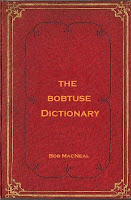
Best practices are hard-earned gifts.
In the west, we rarely notice the box after opening a gift. A gift box has no story. It has no utility beyond obscuring its contents. It's disposable.
In Japan, wooden boxes for clay pots are works of art; often the box has hand-brushed calligraphy applied by the potter. Tomobako is the Japanese word for the hand-crafted box. A tomobako is typically made from the native kiri or empress tree (paulownia tomentosa).
Japanese potter Rosanjin called on Spanish artist Pablo Picasso while visiting Europe in 1954. This historic encounter is described as:
When Rosanjin did call on Picasso, he brought this most renowned Western artist an example of his potting. Naturally it was in the finest of paulownia wood boxes. Picasso was fascinated by the smoothness of the wood and glowed with pleasure as he stroked the surface. Impatiently, Rosanjin thundered "Not the box, not the box, you simple child! What I made is inside the box!"--Masaaki Hirano & Sidney Cardozo, From The Art of Rosanjin
From Wikipedia, a best practice is
a technique, method, process, activity, incentive or reward that is believed to be more effective at delivering a particular outcome than any other technique, method, process, etc.

If best practices are hard-earned gifts, what is the box and what are the contents?
To me,
the box is the best practice
...not the contents. A best practice is like the kiri used in a tomobako. Kiri survives wildfire because its roots regenerate fast-growing stems. Kiri tolerates pollution and is insensitive to soil type.
The grain of a best practice has a handful of distinguishing characteristics. A best practice
- Addresses a problem or objective;
- Is defined within the context of a community;
- Represents consensus judgment;
- Is judged on results; and
- Is published
The inside of the box is the result or outcome.
What does Best Practice mean to you? I need to understand the benefit of doing something a certain way before I adopt it. Having an assertion hidden somewhere in project charter document that says
The team will use best practices <-----huh?
rings hollow. Vacuouus bromides like this remind me of the now defunct Dilbert Mission Statement Generator.
It is our job to continually foster world-class infrastructures as well as to quickly create principle-centered sources to meet our customer's needs--Dilbert Mission Statement Generator
It is helpful if teams discuss, understand, and reach a consensus on best practices. That is,
Nice point of view :) The "best practices" term is used as definitory in ISO 9000-3 or ISO 9001 for Software Development. In PM is also used as "archive of best practices". In CAD applications the term is defined for AI based modules. So, thank you for this nice article!
ReplyDeleteBest practises are a the essence of team members's wisdom. They result from mistakes and successes and allow transfer this experience to whom still did not (and hopefully will not) have to "rediscover Amrica".
ReplyDeleteVery interesting. “A best practice is defined within the context of a community." Hence why larger organizations tend to become more buerocratic, and small/medium-sized businesses become self-reinforcing cultures.
ReplyDeleteA best practice to be beneficial to all, therefore, must inspire something we all have in common. Those clay pots and hand-lettered boxes were celebrations of the creator's skill and passion—as well as a container for the “real” gift. That mark should be on everything we do.
Thank god good packaging is still an artform!
@Aaron - :-)
ReplyDeleteMaybe it is the box. Perhaps Rosanjin, had it all wrong. Picasso, like many kids find more pleasure in the box than the object inside that has only one purpose. The box has an infinite uses. It could be a fort, or a car, a sailing ship, a table, a coffin with a vampire inside...
ReplyDeleteI like the metaphor. And I've played with some boxes more than the object inside.